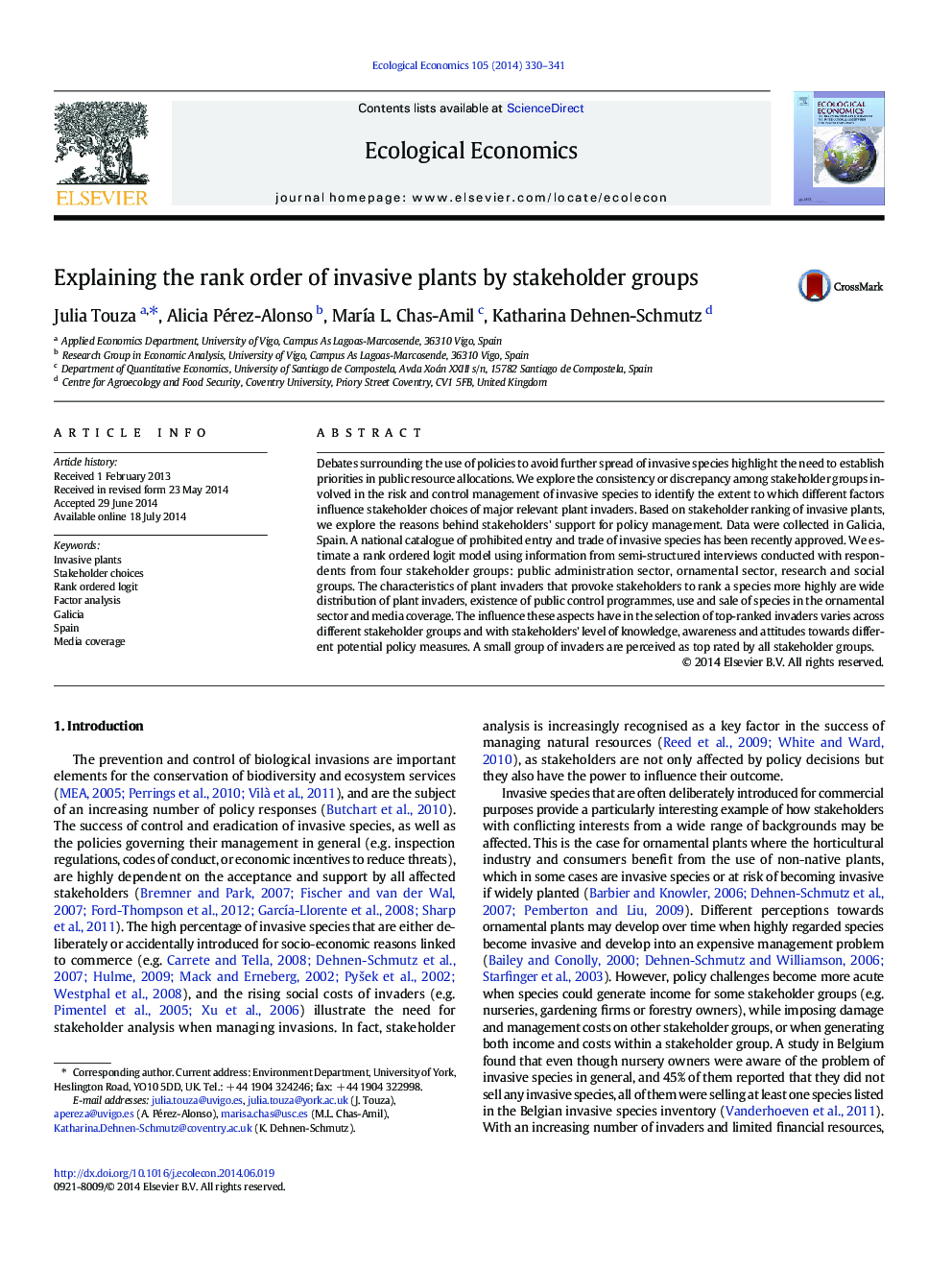| Article ID | Journal | Published Year | Pages | File Type |
|---|---|---|---|---|
| 5049728 | Ecological Economics | 2014 | 12 Pages |
â¢We use a rank ordered logit to explain stakeholders' ranking of invasive plant species.â¢We study perceptions and stakeholders' rankings representing multiple interests.â¢Media coverage plays an important role in stakeholders' rank order choice.â¢A small group of species are perceived as key invaders by all stakeholders.
Debates surrounding the use of policies to avoid further spread of invasive species highlight the need to establish priorities in public resource allocations. We explore the consistency or discrepancy among stakeholder groups involved in the risk and control management of invasive species to identify the extent to which different factors influence stakeholder choices of major relevant plant invaders. Based on stakeholder ranking of invasive plants, we explore the reasons behind stakeholders' support for policy management. Data were collected in Galicia, Spain. A national catalogue of prohibited entry and trade of invasive species has been recently approved. We estimate a rank ordered logit model using information from semi-structured interviews conducted with respondents from four stakeholder groups: public administration sector, ornamental sector, research and social groups. The characteristics of plant invaders that provoke stakeholders to rank a species more highly are wide distribution of plant invaders, existence of public control programmes, use and sale of species in the ornamental sector and media coverage. The influence these aspects have in the selection of top-ranked invaders varies across different stakeholder groups and with stakeholders' level of knowledge, awareness and attitudes towards different potential policy measures. A small group of invaders are perceived as top rated by all stakeholder groups.
